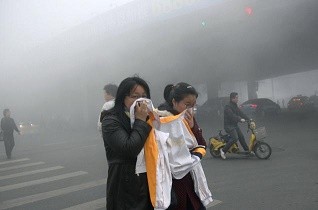Amid the intense pollution that clouds the Chinese capital, a heated debate erupted among Chinese experts. The debate centered on why severe pollution is becoming a more prevalent occurrence in China.
According to China Daily, some experts put the blame on low-quality coal, which is often used to heat households during wintertime. Others blame vehicle emissions and heavy industrial discharges.
Coal-burning is strictly banned in downtown Beijing, but the practice is still alive in some rural areas in the northern provinces.
"The main cause is the widespread use of low-quality coal in rural regions and in areas with a lack of environmental supervision," said Xie Shaodong, an environmental professor at Peking University. Other experts such as Chai Fahe from the China Research Academy of Environmental Sciences agree.
Environmental authorities, on the other hand, revealed that the main cause of pollution is vehicle exhaust in Beijing, dust in Tianjin and coal-burning in Shijiazhuang.
Although the smog is only expected to last until Wednesday, Dec. 9, the heavy population has already brought adverse effects to northern China's industry and transportation as well as over 300 million people.
The hazardous particles and health risk that accompany the smog are also predicted to linger in the region until Saturday, Dec. 12, according to the Ministry of Environmental Protection.
After Beijing issued a red alert, Dingzhou and Hinji in Hebei Province also followed suit. Meanwhile, lower-level alerts were sounded in Tianjin and some parts of Hebei, Shandong, Henan and Shanxi Province.
Twenty-seven cities including Jinan, Taiyuan, Shijiazhuang and Zhengzhou also raised local alerts.
Following the issuance of the red-level warning, local authorities in Beijing imposed emergency response plans including suspension of industrial operations and vehicle restrictions.



























